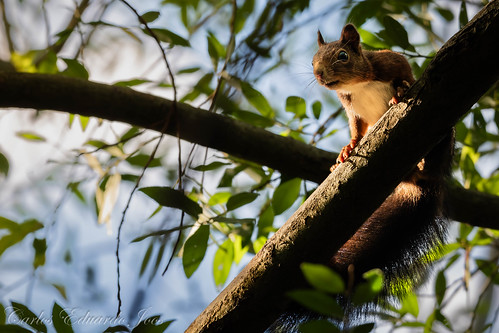Whether they’re scampering through your front yard, darting in and out of traffic, or busily hoarding food for the winter, squirrels are well-loved urban wildlife recognized by all. Notwithstanding their commonplace presence, many people comprehend very little about their behavioral patterns and life. With over 200 species dominating differing habitats all over the world, squirrels exhibit a captivating range of behaviors. Here, we delve into ways to better understand some of the most common actions performed by these unique creatures, their direct causes, and inherent significance.
One of the most notable behavior patterns of squirrels involves their food-seeking antics. Hoarding or storing food for later use, especially during the winter months, is a significant feature of squirrel behavior. This form of behavioral adaptability, known as scatter-hoarding, helps squirrels survive during periods when food availability becomes scarce or sporadic. They engage in an exciting array of strategies to ensure they find their stores later on. These include creating maps in their minds of hoard locations based on landmarks and using their sense of smell. It’s also quite common for squirrels to fake bury an item in one spot while they actually conceal it in another, as a protective measure against thieves.
In terms of squirrel communication, these creatures practice both vocal and non-verbal forms, tailored to alert others of danger and navigate their social systems. One of their most recognizable methods of communication is through tail signals. Fast twitching of the tail, for instance, typically suggests irritation or is used as a warning to other squirrels about looming threats. Similarly, squirrels can produce an array of sounds that may include barking, chirping and purring, each representing a distinct message or mode of communication. For example, barks are usually given out when a squirrel feels threatened, while purrs are common when the animal is content.
Thirdly, their territorial behavior is crucial to understanding. Squirrels are known to be moderately territorial, with males’ territorial behavior peaking during the breeding season. However, when resources are abundant, squirrels may demonstrate social tolerance. Interactions between squirrels can range from mutual avoidance to direct aggression based on the current availability of food and mates. Part of behaving territorially involves scent-marking, in which squirrels integrate glandular secretions with urine to mark their area. This scent-marking allows them to communicate their presence and territory to other squirrels effectively.
To get a deeper understanding of squirrel behavior, one must also pay attention to mating rituals. The mating habits of squirrels can be quite varied and complex. While some species participate in mating chases, others may engage in fights for mating rights. Most squirrels are polygynous, with males seeking to mate with multiple females each season. Predominantly, mating chases consist of a group of males chasing a single female. The chases are swift and can cover large distances across trees and ground before the female finally stops running and allows the dominant male to mate. Once mated, most female squirrels set up a nest and raise their young independently.
Lastly, nest-building behavior of squirrels needs mention while understanding their behaviour. Squirrels build nests known as ‘dreys’ primarily for rearing their young and taking shelter. These nests typically comprise leaves, twigs and other materials, which are intricately woven together to withstand harsh weather conditions. Often, to protect against predators, squirrels locate their nests high in trees or within tree cavities. Trees with dens provide the best security during winter months, shielding against winds and low temperatures.
As we become more attuned to the squirrels’ ways, we not only appreciate their fascinating behavior but also build better coexistence strategies as responsible residents of shared spaces. Understanding squirrel behavior can also assist researchers and wildlife enthusiasts to better conserve these intriguing animals and their diverse habitats, foster more humane solutions to human-squirrel conflicts, and enrich our overall understanding of nature’s sophisticated dynamics.
The red squirrel (Sciurus vulgaris) #Explorer
By Carlos Eduardo Joos on 2023-09-07 18:27:55
